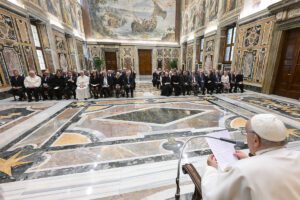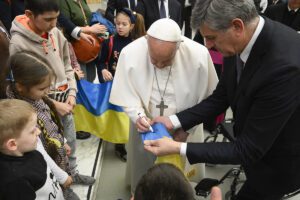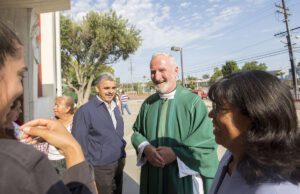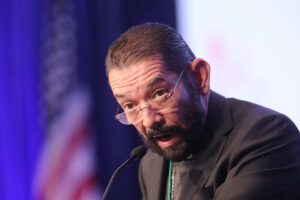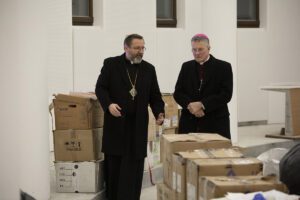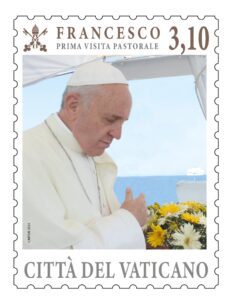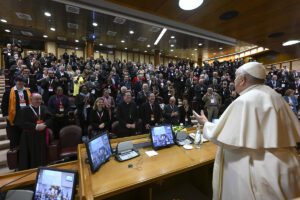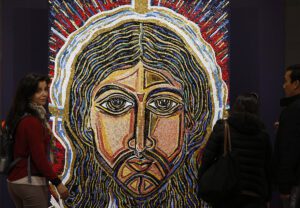WASHINGTON (OSV News) – The Biden administration Feb. 21 proposed its most restrictive border control measure to date, announcing it plans to issue a temporary rule blocking asylum-seekers who cross the border without authorization or who do not first apply for protections in other nations before coming to the United States. Catholic immigration advocates condemned the proposal.
The proposed rule would introduce a “presumption of asylum ineligibility for certain noncitizens” and instead “encourage migrants to avail themselves of lawful, safe and orderly pathways into the United States,” according to the text of the document. Otherwise, it said that migrants should “seek asylum or other protection in countries through which they travel, thereby reducing reliance on human smuggling networks that exploit migrants for financial gain.”
U.S. immigration policy generally differentiates those fleeing persecution in other countries from other migrants who cross the border unlawfully. The proposal, which the administration has characterized as temporary, would scale back that approach.
The move comes as Republicans have made immigration and border security a key point of contention with the Biden administration, and as the primary cycle for the November 2024 presidential election begins in earnest. Biden, a Catholic Democrat, is widely expected to seek a second term in the White House.
The proposed rule will first be subject to a 30-day public comment period before it could be formally implemented.
The U.S. bishops, however, voiced concern the rule would impose punitive restrictions on the right to seek asylum at the U.S.-Mexico border. In a statement, Bishop Mark J. Seitz of El Paso, Texas, chairman of the U.S. Conference of Catholic Bishops’ Committee on Migration, said the USCCB is “deeply troubled by this proposal, which perpetuates the misguided notion that heavy-handed enforcement measures are a viable solution to increased migration and forced displacement.”
“Decades of similar approaches have demonstrated otherwise,” Bishop Seitz said. The El Paso bishop said the U.S. bishops have recognized “our country’s right to maintain its borders,” but have “consistently rejected policies that weaken asylum access for those most in need of relief and expose them to further danger.”
“Because that is the likely result of this proposal, we strongly oppose its implementation,” Bishop Seitz said.
He added that while the USCCB appreciates the administration’s “desire to expand lawful pathways to the United States, especially through increased refugee processing,” he emphasized those efforts should not take place “at the expense of vulnerable persons urgently seeking protection at our border.”
“Above all, the sanctity of human life remains paramount,” he said.
Biden administration officials, however, said the proposed rule would incentivize lawful migration.
“We are a nation of immigrants, and we are a nation of laws,” Secretary of Homeland Security Alejandro Mayorkas said in a statement.
“We are strengthening the availability of legal, orderly pathways for migrants to come to the United States,” he said, “at the same time (we are) proposing new consequences on those who fail to use processes made available to them by the United States and its regional partners.”
Mayorkas said providing individuals a “safe, orderly and lawful path” to the U.S. makes them less likely “to risk their lives traversing thousands of miles in the hands of ruthless smugglers, only to arrive at our southern border and face the legal consequences of unlawful entry.”
U.S. Attorney General Merrick Garland said the Department of Justice, which exercises oversight of the U.S. immigration courts, is establishing temporary rules for asylum eligibility to be in place once the Biden administration lifts the Title 42 public health order.
“We look forward to reviewing the public’s comments on this proposed rule,” he said.
Other Catholic immigration advocates, however, joined with the USCCB in sharply criticizing the proposal.
“The ban unfairly targets those fleeing from northern Central American countries, for whom the administration has provided no parole options,” Dylan Corbett, executive director of the Hope Border Institute, said.
“There is nothing but a lack of courage preventing this administration from taking positive steps now to repudiate the damage of the previous administration and finally put in place a functioning, safe, rights-respecting system at the border that works for asylum-seekers and our border communities,” he said.
Anna Gallagher, executive director of the Catholic Legal Immigration Network Inc., or CLINIC, said, “In continuing with this rule, the Biden administration is betraying its own commitment to uphold asylum, as well as violating the principles of U.S. law and Catholic social teaching with respect to migration.”
CLINIC compared the proposed rule to an “asylum ban” issued by the Trump administration, which was later struck down by a federal court.
“The right to seek asylum through a full and fair process is a bedrock principle of international and domestic law,” Gallagher said. “These new restrictions undermine that right and will have inhumane and horrific consequences for our immigrant brothers and sisters.”
Ronnate Asirwatham, director of government relations at Network, a Catholic social justice lobby, said the Biden administration was “ending the right to seek asylum on our southern border.”
“(The) success of our southern border,” Asirwatham said, “should not be measured by the number of people we turn away to death and persecution, but by the number of people we welcome to safety.”
